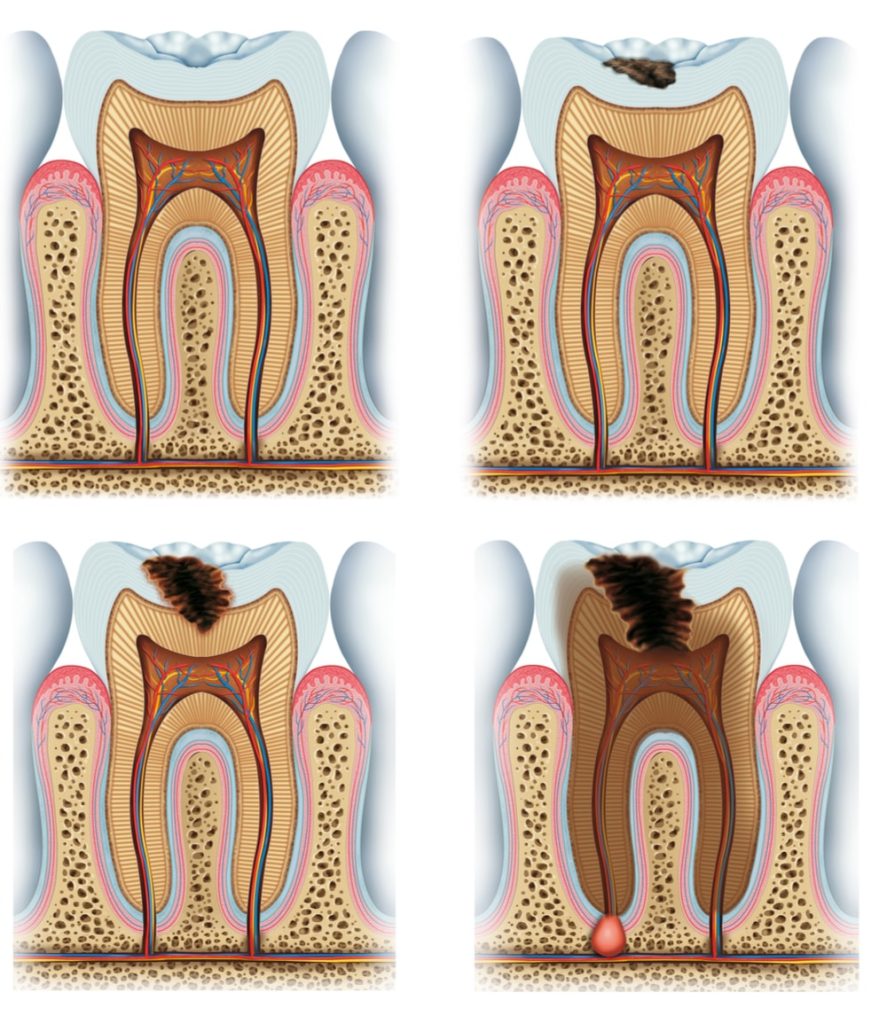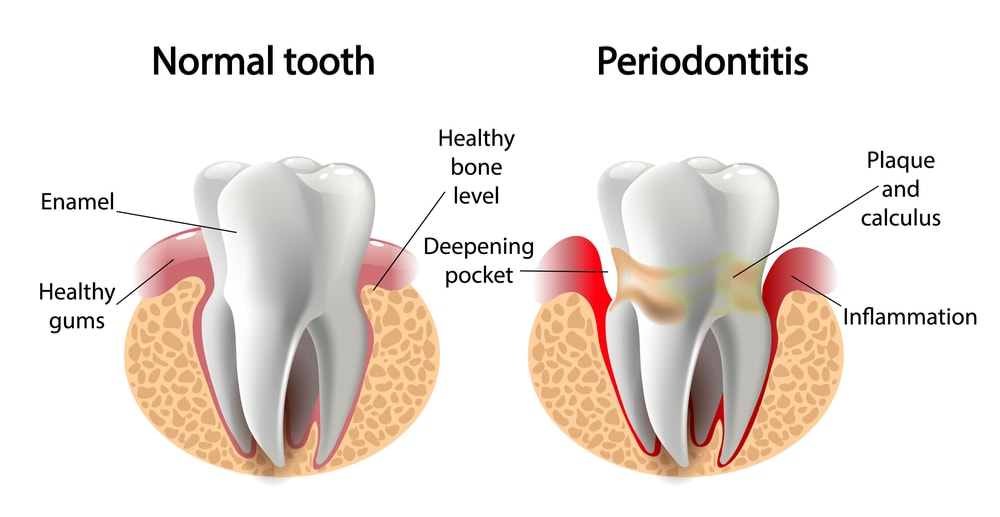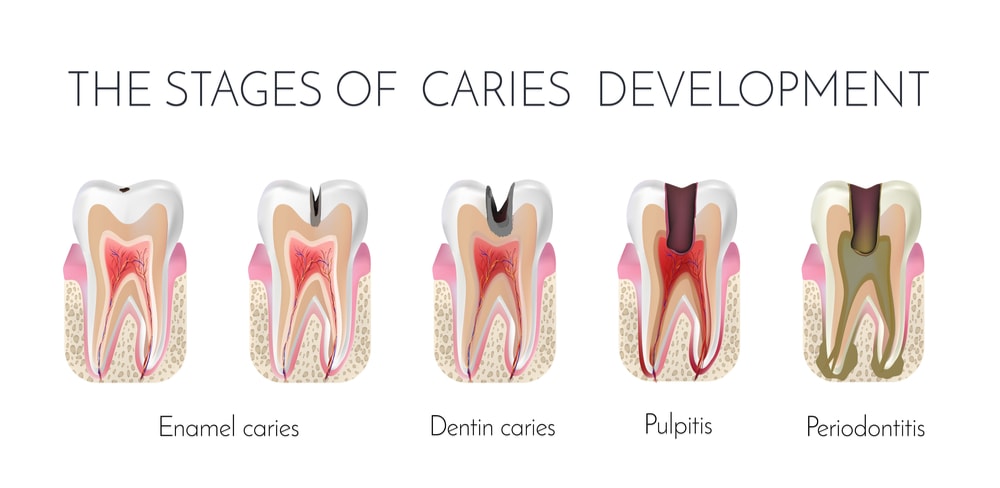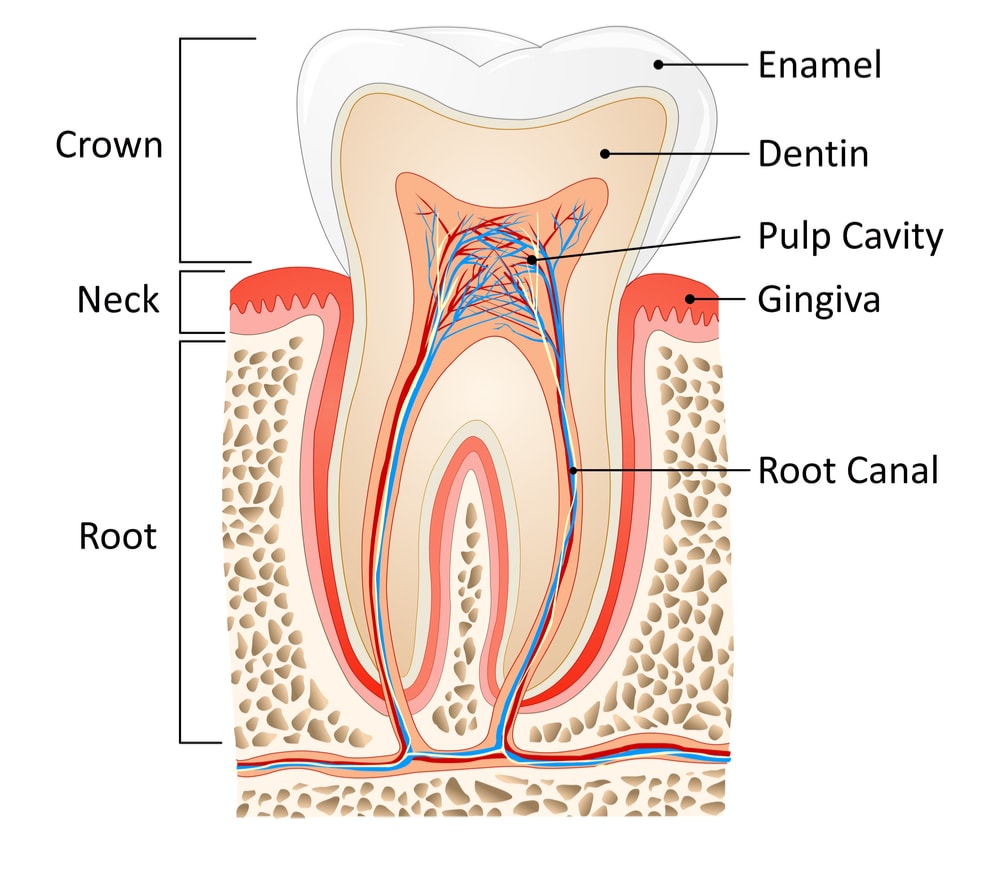Chapter 4: Sensitivity and gums’ irritation after teeth whitening
Introduction
We covered the basics.
It is now time to get more advanced.
I think you will agree with me when I say that safety comes first.
After all, teeth whitening is a cosmetic procedure, and it should not come at the expense of oral health.
But is that really a concern?
Not really, because as long as you follow your dentist’s advice and the product’s directions, you are home and dry.
Teeth whitening procedures are actually very safe.
While there are some side effects like teeth sensitivity or irritated gums, these can be either addressed (sensitivity) or will go away (irritation) after your treatments.
With that, here is more information to alleviate your concerns.
Let’s begin by addressing a question which is usually top of mind.
Can teeth-whitening increase the risk of oral cancer?
Negative.
The risk of oral cancer does not increase with the use of bleaching agents of any type. Studies have demonstrated this.
There is insufficient evidence to classify hydrogen peroxide as cancerogenic.
The IARC has evaluated hydrogen peroxide. As a result of its investigation, it considers it unclassifiable regarding carcinogenicity to humans. Indeed the chemical belongs to Group 3: Unclassifiable.
According to the SCCNFP:
- The use of 3.6% hydrogen peroxide products (10% carbamide peroxide) in the oral cavity, does not represent a cancer risk.
- This is the case when the users “do not have an increased risk of oral cancer due to tobacco use, alcohol abuse, or genetic predisposition.”
- Although, repeated use of tooth whitening products might increase the risk of oral cancer.
So, now that we have put this major concern to rest let’s look at some common (but minor) side effects.
What are the most common side effects of teeth whitening?
There are not many side effects.
In fact, there are just two typical issues you may encounter:
- More tooth sensitivity to cold, hot, or sweet;
- Irritation of your gums because of the oxidizing effect of bleaching agents. Hence, your gums need to be protected.
These symptoms tend to disappear once the bleaching stops.
And for the excellent news … no study has ever shown an irreversible effect.
But just how frequent is sensitivity after teeth whitening?
Next …
Frequency of sensitivity after teeth whitening with OTC products
A study showed that for chemically based OTC tooth-whitening products (gel in trays, paint-on films, and whitening strips):
- two-thirds of patients experienced a transient mild to moderate sensitivity;
- ” ‘mild’ to ‘moderate’ tooth sensitivity and gingival irritation were the most common side effects”;
- patients experienced sensitivity during the first period after the teeth-whitening procedure;
- “whitening strips and products with high concentrations of hydrogen peroxide caused more users to complain about tooth sensitivity.”
That leads us on naturally to the next set of questions (about sensitivity).
Sensitivity after teeth whitening: why, when and how long?
Let’s address the “why” first …
It all results from the penetration of hydrogen peroxide, for it will not stop at your enamel or dentin. Instead, it will go all the way down to the pulp during a 5-15-minutes exposure period.
Sensitivity can last several days and usually starts at the time of treatment.7
According to the ADA, it (sensistivity):
- “is generally related to:
- the peroxide concentration of the material
- the contact time.”
- “may depend on:
- the quality of the bleaching material,
- the techniques used,
- an individual’s response to the bleaching treatment methods and materials.”
Let’s now see how sensitivity can be addressed.
How can I treat tooth sensitivity after teeth whitening?
On the plus side … There is a simple solution.
You just need to use a type of toothpaste that can provide relief for sensitive teeth.
For example, you may use Sensodyne or other similar products by Colgate or Crest. They contain potassium nitrate and sodium nitrate.
You can use them both before, during, and after the procedure.
What is their mechanism of action?
They soothe the dental nerve endings.
But maybe you are still feeling concerned …
If so, here is another quick tip to make the post-whitening period uneventful: consider chewing sugarless gum to reduce peroxide levels.
Finally, if you have a headache, take what you usually use (for headache), such as Ibuprofen.
We talked about teeth sensitivity, but what about gum irritation?
Jump over to the question.
Gums irritation after teeth whitening.
This is an issue you will encounter mainly with OTC products.
Why?
Because your dentist’s supervision will reduce inconveniences to a minimum. This will be true both for in-office as well as for at-home teeth whitening.
Now, gum irritation begins within a day of the treatment, and can last several days.
If you see that your gums are white or sore after any bleaching procedure, please follow up with your dentist.
Since we mentioned the role of your dentist in relation to safety, let’s expand on that a little bit.
Seeing a dentist before teeth whitening. Safety, risks, and contraindications of teeth whitening.
Do I need to see a dentist before teeth whitening?
Things are not always straightforward when it comes to teeth discolorations. There are many possible causes of staining.
If the color change results from food pigments, then solutions will be more straightforward.
But what about if it results from tooth decay?
That is why your dentist needs to assess your situation before taking any decision.
If you have cavities (tooth decay), teeth whitening will be contraindicated. You will need to treat your cavities before attempting any procedure.
That is common sense, right?
What could happen if you undergo teeth bleaching in the presence of tooth decay?
You will likely suffer from significant sensitivity because bleaching agents will penetrate the inner areas of the tooth.
So, it is important that your dentist gauges if teeth-whitening is the right treatment for your staining.
He will also discuss the whitening products or procedures that are best suited for you.
All of this could be part of your routine 6-month regular visit to your dentist.
This is something we highly recommend.
The ADA also advises patients to discuss with their dentists what whitening procedure is best for them.
Let’s now explore in more detail how a dental examination takes place.
Description of a dental examination before teeth whitening
In a way, your dentist’s work will resemble that of a detective ?️♂️.

He will look for clues, find incriminating evidence and round-up the suspects (for your teeth color changes).
Usually, he will begin to:
- Check for tooth abnormalities such as caries or leaking dental restorations (fillings).
- Some changes in tooth color could be the only visible sign of such problems. They cause teeth to appear darker.
- Teeth whitening will mask the underlying tooth decay.
- Tooth decay may continue to worsen if left untreated. And, it will likely lead to the need for more expensive and extensive treatments.
- Verify the presence of cracks and gum disease (periodontitis).
- If present, your dentist will delay the whitening procedure until correction of these problems.
- This approach will avoid irritations or other unpleasant outcomes.
Normal tooth and tooth with gum disease (periodontitis)
- Identify your dental restorations, such as existing crowns, veneers or fillings.
- As discussed in a previous article (see Teeth whitening’s impact on the color of crowns, veneers, implants, bridges or fillings.), their shade is not affected by conventional whitening agents. Your dentist will discuss with you whether teeth bleaching will have a desirable outcome.
- You should expect extra costs and/or minor risks from replacing your dental restorations after teeth whitening. Replacement may be necessary to get a uniform post-procedure tooth color.
- Identify a devitalized tooth. If it is discolored, it will need a very different whitening procedure than a live tooth. Though it is a low-risk routine treatment.

Now, before any treatment, what will you do to help your dentist’s sleuthing?
The answer is easy…
Share the following information with him:
- Any past issues about tooth sensitivity.
- A history of allergies to specific compounds used in the bleaching gels.
It will enable him to adapt the teeth whitening procedure to your specific needs.
So, the bottom line is that …
Your dentist will take all reasonable precautions to avoid potential issues or any discomfort.
One last point we should not forget.
He may use x-rays to gauge and determine your oral dental health. These will help identify:
- Cavities,
- oral infections,
- gum disease,
even at their early stage.
Now, let’s take a closer look at the safety of teeth-whitening procedures and products.
Are OTC, in-office and home teeth whitening with trays safe?
Were you concerned before reading “Can teeth-whitening increase the risk of oral cancer?” ?
If so, you should now be reassured.
Teeth whitening is not harmful.
However, some potential side effects do exist.
The most significant ones are:
- Increased sensitivity to cold during the first 1-3 days after treatment. Otherwise, its side effects are no different than those observed during regular food ingestion.
- Irritation of the gums only if they are not adequately protected during the procedure.
Peroxide-based products can indeed irritate or corrode your gums.
How can you tell if you are experiencing this?
You may feel a burning sensation. This effect will increase with the chemicals’ concentration, time, amount of product, etc.
So, how will a dentist protect your gums?
The answer is simple… Protective gels or a rubber sheath will do the trick for in-office teeth whitening.
These cover your gums (during in-office teeth whitening). And they drastically reduce any risk of gums’ irritation due to contact with the bleaching agents.
As for home teeth whitening…
There are no safety issues if:
- You use “at-home tooth bleaching materials containing 10% carbamide peroxide (3.5% hydrogen peroxide)”,
- under supervision by dental professionals.
And really, you can sleep quietly because:
- data accumulated over 20 years did not show any long-term negative impact on patients’ health.
- The data also included some long-term studies.
As for OTC products …
You are probably surmising already that things are different.
And you are right.
- Gum protective measures are not available.
- Also, and unfortunately, there is limited clinical evidence about the safety and effectiveness of these (OTC) products.
Now, patients are generally not aware of how to report negative events (adverse events) through the FDA’s MedWatch system.
(By the way, were you aware of this possibility?)
Hence, these (events) are probably seldom reported.
Nonetheless, excessive usage of OTC products may damage the glossy outer surface of your teeth (enamel).
Two cases of patients with significant enamel damage have been reported. These events may have been due to the overuse or the low pH (acidity) of OTC whitening products.
Thus, if you consider using OTC products, you should first have a dental examination.
Seeing your dentist will help you choose the best method for your specific situation. It will limit the risk of harm and improve the quality of the whitening effect.
Let’s now learn about the use of teeth whitening in special age groups?
Is teeth whitening safe during pregnancy or lactation?
The answer looks simple at first …
Since there seem to be no specific side effects for pregnant women.
Though, after careful consideration, it is preferable that you don’t undergo this procedure because of the lack of safety data.
Teeth whitening is also not recommended if you are lactating.
And what about younger age groups?
Next …
Can children and teenagers do in-office teeth whitening?
The situation is somewhat similar to that we have just seen.
Meaning that there is a general lack of data to establish appropriate use and indications in these populations.
Also, young patients should ideally be responsible.
Now, if you have a child who may benefit from teeth whitening, he/she should at least have all his/her permanent teeth.
Generally, though, sensitivity can be significant in children under 16.
Why?
Because they have an enlarged pulp chamber or nerve within their tooth.
So, it is not a surprise that bleaching is usually not advised in this young age group (under 16).
As for teens … it is preferable or them to wait until they turn 18. Though, some may benefit from the procedure before this age.
In anyway, before taking any decision, your kids should first get their dentist’s approval.
Consider using a tailored made teeth whitening tray to avoid leakage of the gel if a home-based procedure is the choice.
As advised by the ADA, “close professional and parental/guardian supervision are needed to maximize benefits and minimize adverse effects and overuse.”
Last but not least, after mothers, children or teens, we are left with a third age group, where one needs to evaluate safety carefully.
Let’s talk about the elderly population.
Am I too old for tooth whitening?
Be reassured. Age is not an issue per se.
Teeth whitening can provide benefits to all adults irrespective of age.
Although maturity can play an indirect role.
How?
It may increase the probability that you have dental restorations (crowns, implants, …).
Now, teeth whitening may not be appropriate for you if you have crowns, implants or bridges on the front facing teeth.
Another problem could result from your experiencing increased gum sensitivity over the years.
We always recommend that you seek professional advice before considering this treatment.
So, other than what we have discussed for these three age groups, are there more contraindications?
Scroll down and you wil find out.
Is teeth-whitening for everybody? What are its contraindications?
Some “times” teeth whitening may not be the best treatment for you.
Here is a brief but comprehensive summary of those “times”:

- Your dentist informs you that your dental restorations are defective. Priority goes to treating them.
- Your dentist has identified tooth decay. Again, you must first deal with this problem (before considering teeth whitening).
Stages of caries formation: enamel caries, dentin caries, pulpitis and periodontitis - You have decalcifications (which show as white spots) – see also How effective is in-office teeth whitening if you have decalcifications?
- You are suffering from the loss of a tooth’s surface, exposing the dentin. This issue may be due to:
- tooth decay (see the previous point),
- trauma,
- excessive consumption of citrus fruits or carbonated soft drinks,
- teeth grinding,
- aggressive brushing,
- defects in enamel development.
Tooth anatomy: root, neck, and crown of a tooth
- Your expectations are unrealistic.
- You have gum disease (gingivitis or periodontitis).
- You have developed gum recession. This happens when the gum line pulls back or wears away exposing the root. This is yellow and does not bleach like the rest of the tooth (also called the crown). Roots do not have an enamel layer, and whitening procedures will not work.

The above list speaks volumes about the importance of a consultation (before any teeth whitening procedure).
Let’s now peek at what governmental agencies say about teeth whitening agents and products.
What concentrations of tooth whitening agents are safe?
If we cross the Atlantic, we discover that …
The European Union’s SCCP says that:
- Only dental professionals can provide tooth whitening products with 0.1 – 6% hydrogen peroxide. These products include compounds releasing hydrogen peroxide (like carbamide peroxide) or hydrogen peroxide.
- Higher concentrations of these molecules are unsafe.
- The first cycle of usage of said products shoud involve a dental professional or be under his direct supervision. This approach would reduce certain risks. For example, the risk that a patient may inadvertently swallow bleaching gel because of inappropriate use of whitening trays.
- As a patient, you must be at least 18 years old.
Tooth whitening (or oral hygiene) products for home use (in the European Union) cannot contain more than 0.1% of hydrogen peroxide (or equivalent amounts of carbamide peroxide).
In the USA much higher concentrations (3–6% hydrogen peroxide) are instead present in OTC products for home use. These include teeth whitening strips, paint-on products …
Talking about the USA, let’s hear what the FDA has to say.
Are whitening products safe because the FDA regulates them?
The FDA does not regulate any teeth whitening products irrespective of the usage or type.
So, the FDA will not provide any oversight for:
- Teeth whitening products used in a dental office,
- “dentist-dispensed products for at-home use,”
- OTC (patient-purchased) products,
- “products used in non-dental settings.”
Tooth whitening products fall under the U.S. cosmetic regulations. These are less strict than those for medical products.
Hence, tooth whitening products make it to market very easily because the FDA has not identified any of the ingredients (in the products being sold) as unsafe.
Does this mean they are basically innocuous?
Nope.
The ease with which you can get them, should not deceive you.
We have seen (check Gums irritation after teeth whitening) how their inappropriate use may result in:
- Irritation of your gums,
- undesirable effects on your teeth.
These effects may also be due to their low pH and poor product quality.
You should note, though, that the FDA regulates dental lasers used for in-office teeth whitening.
Let’s now briefly talk about the ADA seal of acceptance.
How can you ensure a whitening product is safe?
Did you know that there is a way to see whether a teeth whitening product is safe?
Curious?
If it carries the ADA seal of acceptance, you can stop worrying.
It will mean that the manufacturer:
- Has supplied data about its safety and efficacy,
- members of the ADA’s Council on Scientific Affairs have reviewed the submissions and believe it adheres to their standards
But there is a problem …
The list of OTC whitening products carrying this seal is limited.
Actually, as limited as can be, since it contains only one product: the Crest 3D White Whitestrips (Glamorous White).
The ADA, in fact, believes that oversight by your dentist is necessary for safe and effective use of whitening products.
Final remarks
Thanks for staying with us all the way.
We hope you have enjoyed this article.
By the way … You are now within a whisker of “teeth whitening enlightenment” ?.
What is missing then? ?
Chapter 5: Natural methods to preserve or whiten your teeth
So, only one chapter to go before reaching infinite teeth whitening knowledge!
And in case you have not read them all, as a reminder, the guide also comprises the following chapters:
Chapter 4: Sensitivity and gums’ irritation after teeth whitening
Teeth Whitening: The Definitive Guide in case you have not read it yet).
Chapter 1: In-office teeth whitening
Chapter 2: Whitening strips, toothpaste, paint-on films, and trays with gels
Chapter 3: Teeth whitening results
SUTTON PLACE DENTAL ASSOCIATES ON THE WEB






